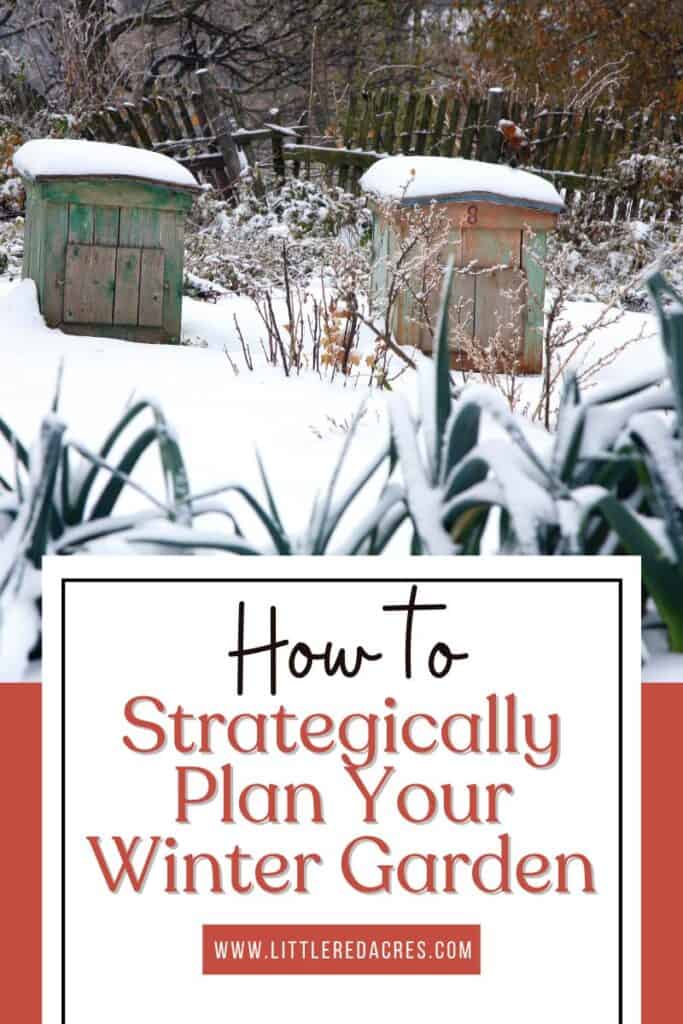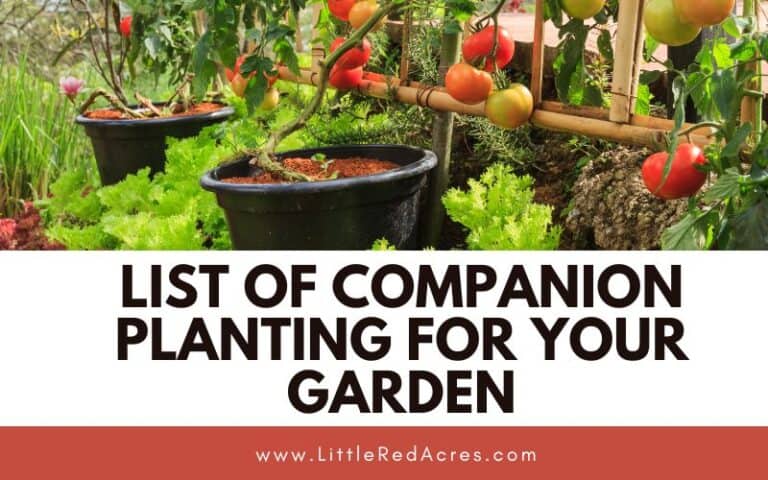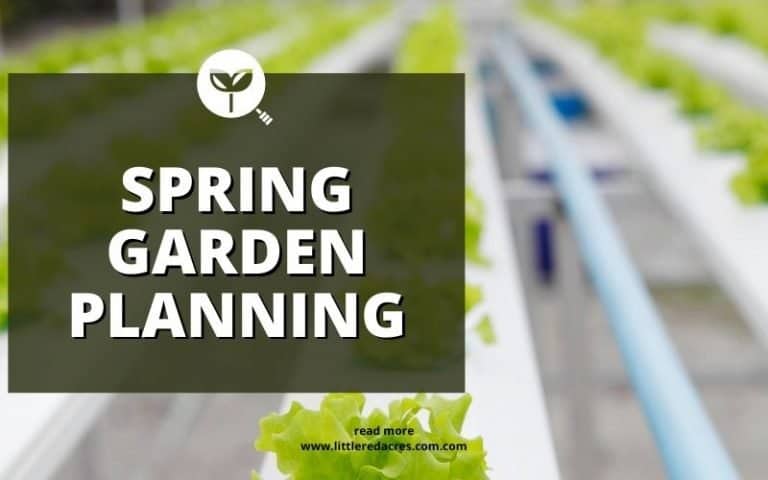How to Strategically Plan Your Winter Garden
Inside: Learn how to strategically plan your winter garden with finesse and foresight. Harness the potential of the season and cultivate a stunning outdoor haven.
When the snow begins to fall and the temperatures drop, it can be tempting to just hunker down indoors until spring arrives. But there are still plenty of garden projects that can be done during the winter months to get a jump start on the growing season.

This post may contain affiliate links, see my disclosure policy for more information.
How to Strategically Plan Your Winter Garden
It is past time to start planning your winter garden. This is the perfect time to research what crops you want to grow and to map out your garden so you are ready to go.
Some of the best plants for a winter garden include kale, spinach, lettuce, and carrots. These plants are hardy and can withstand frost and snow. Just make sure you know when to start your winter garden.
Planning Your Winter Garden
Planning your winter garden can be a fun and rewarding experience. By taking the time to plan, you can ensure that your winter garden is both beautiful and productive. Here are ten tips to help you plan your winter garden:
Choose the right location.
When choosing a location for your winter garden, consider both sunlight and drainage. Winter gardens need at least six hours of sunlight per day, so pick a spot that gets plenty of sun. Good drainage is also important, as heavy rains can quickly turn a winter garden into a muddy mess.
Select the right plants.
Not all plants are suited for winter gardening. When selecting plants for your winter garden, be sure to choose varieties that are known to be winter hardy. Some good choices for winter gardens include pansies, violas, kale, and cabbage.
Prepare the soil.
Before planting, it is important to amend the soil in your winter garden. Add organic matter such as compost or manure to help improve drainage and aeration.
Consider a raised bed.
Raised beds are a great option for winter gardens, as they help to improve drainage and keep roots warm.

Protect your plants.
Once your winter garden is planted, it is important to take steps to protect your plants from the cold. Covering plants with a layer of mulch, using row covers, or erecting a cold frame can help to keep plants warm and protected throughout the winter.
Water properly.
Winter gardens need less water than summer gardens, as plants go dormant during the winter months. Be sure to water your winter garden deeply, but less often, to avoid wetting the foliage which can lead to fungal diseases.
Fertilize sparingly.
As plants are dormant in the winter, they need less fertilizer. Apply a light layer of compost or manure in early autumn, before new growth begins.
Inspect for pests.
Be sure to check your winter garden regularly for pests, and take action if any are found. Cabbage worms, for example, can quickly decimate a winter cabbage crop.
By following these tips, you can create a winter garden that is both beautiful and productive. So get out there and enjoy the winter months in your garden!
While many people think of winter as a time to hunker down indoors, there are a lot of garden projects that can be done during this time of year. By planning and preparing your winter garden now, you can make sure that come spring, your garden will be off to a great start.
Frequently Asked Questions
What can I grow in winter in Canada? Remember that the specific plants you can grow in winter will depend on your region within Canada, your local climate, and the protection you provide to your garden. Extending your growing season in Canada often requires careful planning, proper insulation, and possibly using cold frames or row covers to shield plants from harsh weather.
What to plant in winter for spring? Onions, garlic, Brussels sprouts, kale, leeks, carrots, and parsnips are great options for growing through the winter for a Spring crop.

Want More?
6 Vegetables That Require Space to Grow
Benefits of Gardening for Mental Health






